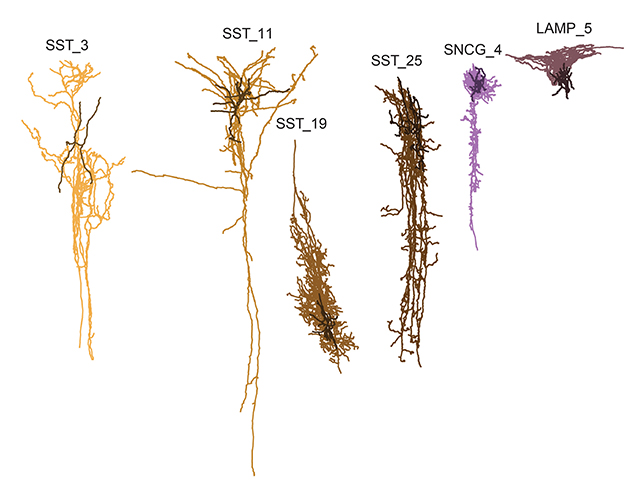Place your adverts here on InfoDig @ low rates; banner ads, sponsored links and guest articles etc. Contact us
An analysis of the genetic activity of brain cells in individuals who have died with Alzheimer's disease has revealed the condition progresses in two stages; a slow increase in inflammation, followed by a more rapid degeneration.
Importantly, the first of these phases is limited in its scope and happens before symptoms such as memory loss appear, indicating opportunities for diagnosis and treatment could occur at an earlier stage than they do currently.
The second stage results in a more pronounced level of destruction, featuring the notorious accumulation of protein plaques and tangles that coincide with severe damage to neurons that results in a loss of cognitive function.
 The study identified the cell types destroyed by Alzheimer's first. (The Allen Institute, Seattle)
The study identified the cell types destroyed by Alzheimer's first. (The Allen Institute, Seattle)The researchers, led by teams from the University of Washington and the Allen Institute for Brain Science, profiled the genetic acitivity of single cells in an area of the brain known as the middle temporal gyrus, where key functions of memory, language, and vision are handled.
"This approach provides a comprehensive understanding of the specific, highly granular cell types affected over the course of disease, where those affected cells are located in tissue microarchitecture and when they are affected as disease progresses," write the researchers in their published paper.
The team analyzed brains from 84 people who had died with Alzheimer's, and who had an average age of 88. These readings and measurements were then compared to brains from donors without Alzheimer's to identify critical differences.
In addition to findings of distinct pathological phases, the researchers uncovered specific damage to cognitively-crucial inhibitory neuron in the first phase. This may be how problems in neural circuitry are initially triggered, the team suggests.
In the past, excitatory neurons – those that activate other neurons – have been linked to Alzheimer's disease. Inhibitory neurons are those that deactivate or calm neurons, so the connection to Alzheimer's here is a new and interesting one.
The findings provide important contributions to a comprehensive and publicly available map of the damage Alzheimier's does to the brain known as the Seattle Alzheimer's Disease Brain Cell Atlas (SEA-AD). The hope is that by tracking this path of neuron destruction more closely, we can better understand how Alzheimer's is taking hold – what stops it, and what allows it to happen.
As our scientific technology gets more advanced and more capable, we're learning more about the complexities of Alzheimer's – whether that's with triggers elsewhere in the body, links to other diseases, or a hidden initial phase we previously hadn't discovered.
"The results fundamentally alter scientists' understanding of how Alzheimer's harms the brain and will guide the development of new treatments for this devastating disorder," says Richard Hodes, the director of the NIH National Institute on Aging, who wasn't directly involved in the study.
The research has been published in Nature Neuroscience.












)
)
 English (US) ·
English (US) ·